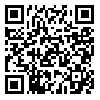BibTeX | RIS | EndNote | Medlars | ProCite | Reference Manager | RefWorks
Send citation to:
URL: http://jdisabilstud.org/article-1-3609-en.html
2- Department of Psychology, Ta. C., Islamic Azad University ,Tabriz ,Iran
3- Department of Clinical Psychology, Tabriz Medical Sciences, Islamic Azad University, Tabriz, Iran
4- Department of Psychology, Ta .C., Islamic Azad University ,Tabriz, Iran
Abstract
Background & Objectives: Learning and attention disorders in the early years of schooling posed profound challenges to the cognitive, emotional, and academic development of children, resulting in decreased performance across multiple learning domains. These disorders, characterized by reduced concentration, impaired information processing, and difficulties in emotion regulation, often lead to diminished motivation, lower self-confidence, the formation of negative academic experiences, and their continuation with long-term consequences. In the absence of early and targeted interventions, these disorders negatively impacted core constructs such as academic self-efficacy and academic engagement. In this context, mindfulness—an emerging approach centered on non-judgmental awareness of the present moment—demonstrated positive effects on students’ psychological and academic functioning by enhancing attention, emotional regulation, and reducing anxiety. Despite its demonstrated global efficacy, existing mindfulness-based interventions in Iran were either generalized or focused on older age groups and failed to address the specific needs of elementary students with learning and attention disorders. So, the present study aimed to investigate the effectiveness of mindfulness-based education on academic engagement and academic self-efficacy of elementary school female students with learning and attention disorders in the City of Urmia, Iran.
Methods: This quasi-experimental study employed a pretest-posttest design with a control group. The research population consisted of all female students attending learning disorder centers (currently integrated health assessment centers) in Urmia during the 2023–2024 academic year. A total of 30 eligible students were randomly assigned to either the experimental or control group. The inclusion criteria for the subjects in the study were as follows: having one of the specific learning disorders according to the diagnostic documents of the relevant centers, the presence of severe symptoms of attention deficit disorder according to the existing files, written consent from the student and parents to participate in the research program, lacking other psychiatric or physical illnesses that prevent continuous attendance, and commitment to constant participation in intervention sessions. The exclusion criteria included incomplete records, parental dissatisfaction or student reluctance, absence of more than three sessions, and contracting infectious or viral diseases during the study period. The research instruments included the Academic Engagement Questionnaire (Schaufeli et al., 2002) and the Academic Self-efficacy Questionnaire (Midgley et al., 2000). To teach mindfulness skills, the Mindfulness Training Package (Worth, 2013) was used to implement the mindfulness-based game intervention in the experimental group. In the present study, to determine the validity of this package, the rater agreement coefficient based on the CVI and CVR indices was used, and values greater than 0.7 were obtained for all items, indicating adequate validity of the package. This program can be implemented in nine 45- to 60-minute sessions. A written statement of consent to participate in the research was received from all participants and their parents. To analyze the data, in addition to descriptive statistics (mean, standard deviation, frequency, and percentage), inferential statistics, including univariate analysis of covariance with a significance level of 0.05, were used. Data analysis was performed in SPSS software version 22.
Results: The results showed that mindfulness-based training had a significant effect on increasing absorption (p=0.003), strength (p<0.001), dedication (p<0.001), and academic self-efficacy (p=0.013) of female students with learning and attention disorders in the experimental group. Effect size values indicated that 37%, 62%, and 28% of the changes in vigor, dedication, and absorption, respectively, and 59% of the changes in academic self-efficacy at posttest were explained by receiving mindfulness training.
Conclusion: According to the findings, the mindfulness-based intervention significantly improved both academic engagement and academic self-efficacy in students with learning and attention disorders. The use of mindfulness packages in schools and educational centers is recommended as a supportive and supplementary educational program.
| Rights and permissions | |
 |
This work is licensed under a Creative Commons Attribution-NonCommercial 4.0 International License. |



